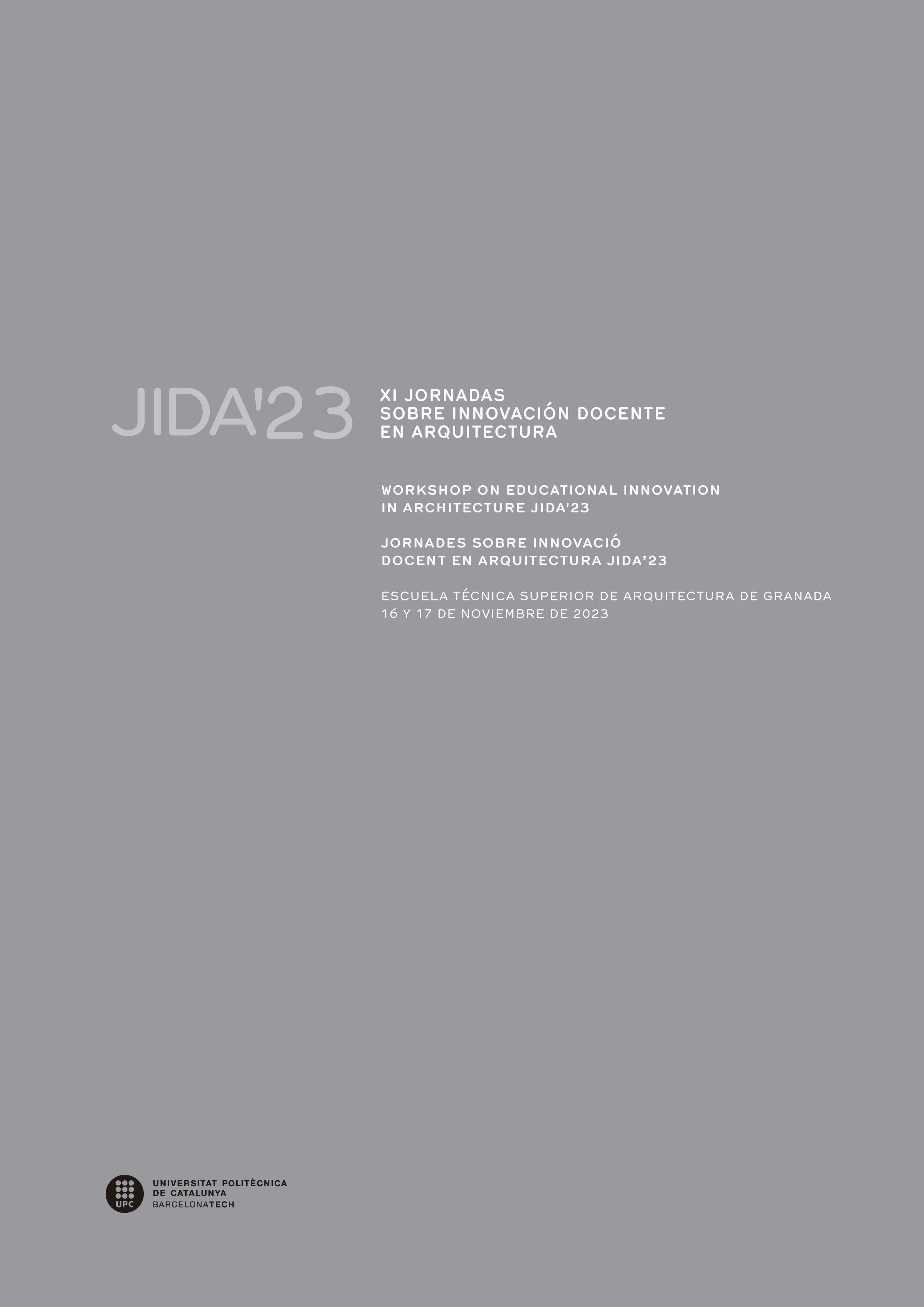Visualization and Representation: Graphic Design and Industrial Production
DOI:
https://doi.org/10.5821/jida.2023.12145Keywords:
design, technology, architecture, visualization, representationAbstract
We present an innovation practice that focuses on the pedagogy of visualization and representation, after validating these two tools as approaches to design problems. Our work is carried out in two phases. In the first phase, we focus on providing training to students in graphic analysis, while in the second phase, we focus on the realms of proposition and ideation. The exercise was planned to be simultaneously developed in two educational programs with common interests, namely the "Bachelor's Degree in Architecture" and the "Bachelor's Degree in Digital Design and Creative Technologies". Furthermore, coordination efforts were made between the two programs to involve two courses from the first year: "Digital Tools" and "Geometry II" from the Bachelor's Degree in Architecture, and "Digital Tools for Information and Communication" and "Digital Geometry and Programming" from the Bachelor's Degree in Digital Design and Creative Technologies.
References
Bloom, B.S. (1956). Taxonomy of education objetives. Handbook 1, Cognitive domain. New York: Addison Wesley Longman.
Borrego, I. (2014). Materia informada. Información circunstancial, instrumental y codificada. Rita: Revista Indexada de Textos Académicos, 1, 112-119.
Brown, S. y Glasner, A. (2003). Evaluar en la universidad: problemas y nuevos enfoques. Madrid: Narcea Ediciones.
Díaz, A. y Hernández, G. (2010). Estrategia Docentes para un Aprendizaje Significativo. Una interpretación constructivista. México: Mc Graw Hill.
Diego Barrado, L. y Estepa Rubio, A. (2015). "De palabra y por escrito. La formación multidisciplinar del arquitecto contemporáneo en la ETSA USJ” en Estepa Rubio, A. et al. Taller vertical de integración. Zaragoza: Ediciones Universidad San Jorge, 8-12.
Domingo Santos, J., Moreno Álvarez, C. y García Píriz, T. (2020). “Exposiciones docente: didáctica, transferencia e innovación en el ámbito académico” en García Escudero, D. y Bardí Milà, B. VIII Jornadas sobre Innovación Docente en Arquitectura (JIDA'20), Escuela Técnica Superior de Arquitectura de Málaga, 12 y 13 de Noviembre de 2020: libro de actas. Barcelona: UPC. IDP; GILDA; UMA editorial, 709-720.
Gálvez, E. (2013). Metodología activa: favoreciendo los aprendizajes. Cuaderno de apoyo didáctico. Perú: Santillana.
Ganz, C. (2018). Gemelo digital. Revista ABB, 2, 94-95.
Gómez, C. y Álvarez, J.D. (2011). El trabajo colaborativo como indicador de calidad del Espacio Europeo de Educación Superior. Alicante: Universidad de Alicante, Marfil.
Mayor, J., Suengas, A. y González, J. (1995). Estrategias Metacognitivas. Aprender a aprender y aprender a pensar. Madrid: Editorial Síntesis S.A.
Patrick, M. (2019). El poder de los gemelos digitales para mejorar el diseño, la atención al cliente y la eficiencia. Revista española de electrónica, 779, 88-90.
Pérez Carabias, V. (2010). Sobre la estructura del grafoaje o del dibujar. EGA Expresión Gráfica Arquitectónica, 15(15), 190-195. <https://doi.org/10.4995/ega.2010.1007> [Consulta: 8 de junio de 2022]
Raposo Grau, J.F. (2010). Identificación de los procesos gráficos del “dibujar” y del “proyectar” arquitectónico, como “procesos metodológicos de investigación científica arquitectónica”. EGA Expresión Gráfica Arquitectónica, 15(15), 102–111. <https://doi.org/10.4995/ega.2010.997> [Consulta: 8 de junio de 2022]
Trachana, A. (2012). Manual o digital. Fundamentos antropológicos del dibujar y construir modelos arquitectónicos. EGA Expresión Gráfica Arquitectónica, 17(19), 288–297. <https://doi.org/10.4995/ega.2012.1381> [Consulta: 8 de junio de 2022]



















